
Brains Processing Sensory Information


Brains Objectives
-
Compare and contrast human brain structure and abilities to other animal species.
-
Explain how cognition relates to animals understanding the world, including examples of different forms of cognition in different species.
-
Describe octopus characteristics including sensory organs, perception, and cognitive abilities.
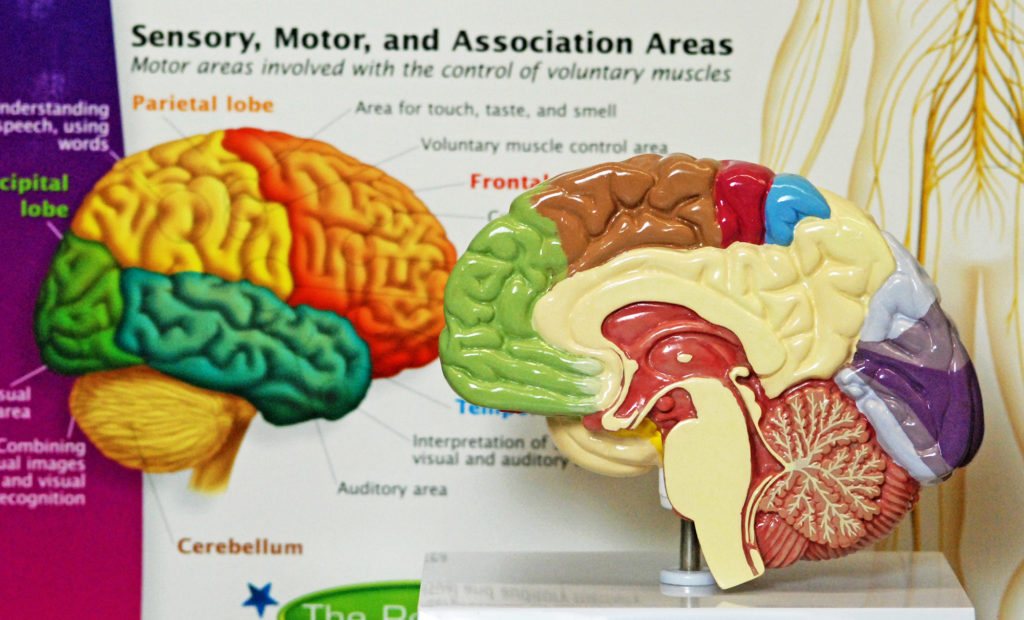
When you ask someone what is special structurally about humans compared to other animals, the answer is often “our brains.” We share similar brain structures to other species alive on Earth today, particularly other primates, but there are characteristics that are well-developed in the human brain.
For example, you can recognize that the brain in the photo is not a real brain, but a model of a brain. You can recognize that an object is not the “real thing” and realize it is a representation of reality. This is just one of several abilities made possible by the structure of our brains.
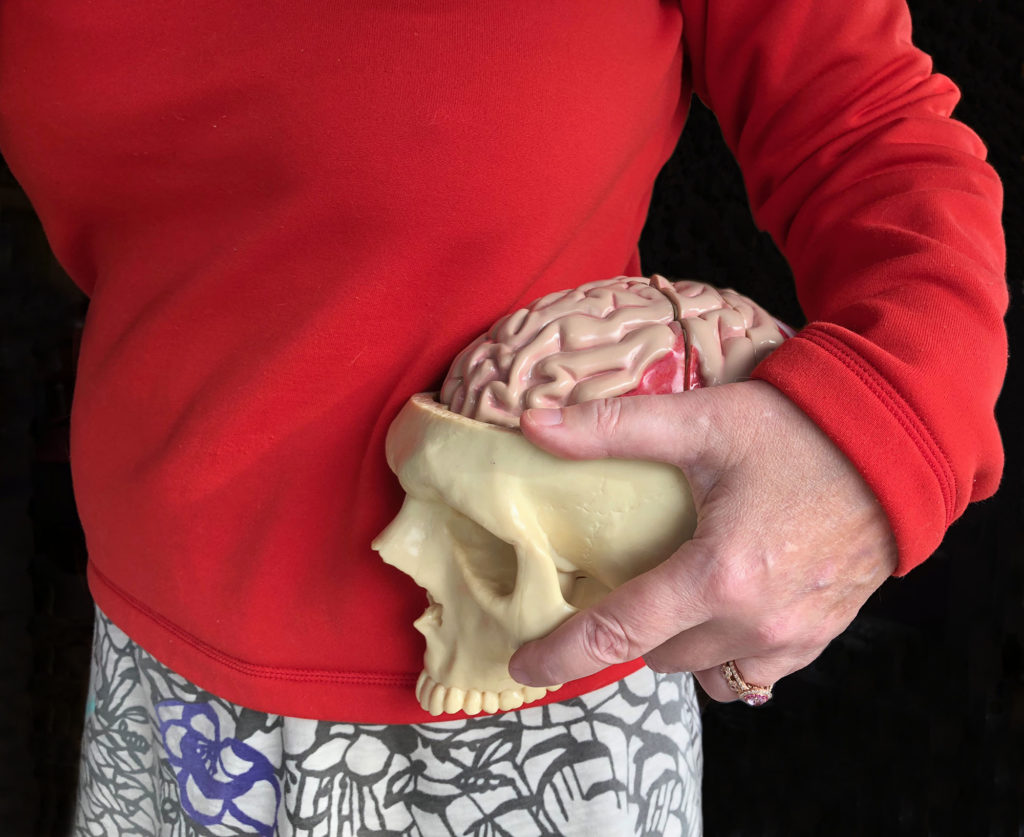
Here is a look at the critical nature of animal brains.
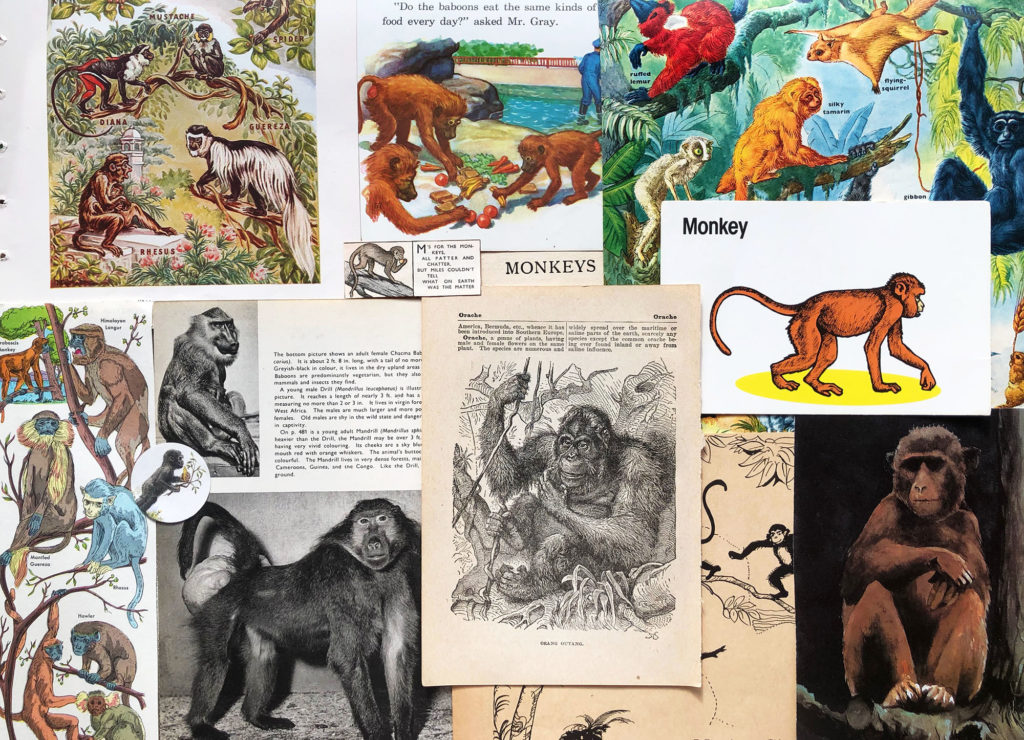
Humans are primates, along with monkeys and apes. Primates are a taxonomic group with a common ancestor that lived in the trees of tropical rainforests, and share characteristics of large brains, good color vision, and dexterous hands for climbing and food acquisition.
Primates can have difficulty adapting to captivity, in part due to lack of mental stimulation that would be present in rich tropical rainforest environments.
The apes, including chimpanzees often engage in repetitive behaviors in captivity.
When possible, primates are now kept in social groups to increase mental stimulation and reduce destructive behaviors.
A small cerebral cortex does not indicate an inability to process information. The structure of the brain and relationship of brain size to the overall size of the animal are also significant.
Crows have a significantly smaller cerebral cortex than humans, but have elaborate behaviors. For example, populations of American Crows drop large nuts on roads, so cars will run over the nuts breaking them open. Some crows also walk in crosswalks with pedestrians to retrieve the open pieces.

Crow species (Family Corvidae) can adapt to a variety of environments, aided by the flexibility of an omnivorous diet.
Crows are frequently mentioned in literature and represented in sculptures; their behaviors suggest high cognition, an awareness of their surroundings.
Crows clearly appear to have some understanding of the world around them. Now we’ll take a closer look at animal cognition and intelligence.
Cognition and Intelligence
Are humans the most intelligent species on Earth? How do we define and measure intellect? How do we resist anthropomorphizing; assessing how smart animals are based on how similar they are to us?
This video introduces and defines cognition and intelligence.
Many people consider animal cognition and intelligence in their pets.
Parrots are anything but “bird-brained,” some species count, identify objects, and ask for specific items in human language. Watch this parrot keep an eye on Mark.
If curiosity, or desire to know, is an indicator of intelligence, these parakeets (budgies) may be an example.
We’ll use the example of our three cats throughout the course to demonstrate how pets can be used to explore structural and behavioral concepts related to wild and artificially selected species.


These cats are Bengal Cats, a cross between domesticated cats and threatened Asian Leopard cats. The original cross was believed to be accidental when a domesticated cat entered an animal cage. The cross has been purposely re-created to achieve unique breed characteristics, including an appearance to “wild” cats.
Most Bengal cats in the pet trade are at least five generations removed from the domesticated cat and Asian leopard cat cross. The closer they are to the original cross, the more their behaviors resembles those of the wild cat. The cats we will be showing retain many of the physical traits and behaviors of the Asian Leopard cat.

Here is a look at the unique animal created through artificial selection.
Mark demonstrates a behavior you may be familiar with: pets responding to food noises. Watch the video and consider what evidence you may see of cognition and forms of intelligence.
Questions to consider:
-
What evidence do you have of cognition, that the cats understand aspects of their external or internal world?
-
What forms of intelligence may be demonstrated? Logical (if…..then)? Spatial when sitting down? Musical?
-
How would you design a study that could support or refute your assumptions about the cats’ cognition and forms of intelligence?
We’ll share some of our studies with you in upcoming guides and you will be making your own animal observations as well.
There are approximately 300 species of octopuses, all with eight limbs and soft bodies that can fit into small spaces.
An octopus is an invertebrate, taxonomically classified as a mollusk. This is the same phylum that includes clams, snails, and slugs.
Cognition has been challenging to study in octopuses: they are difficult to track in nature, easily escape captivity, and communicate in dramatically different ways than humans, including changing their body colors.
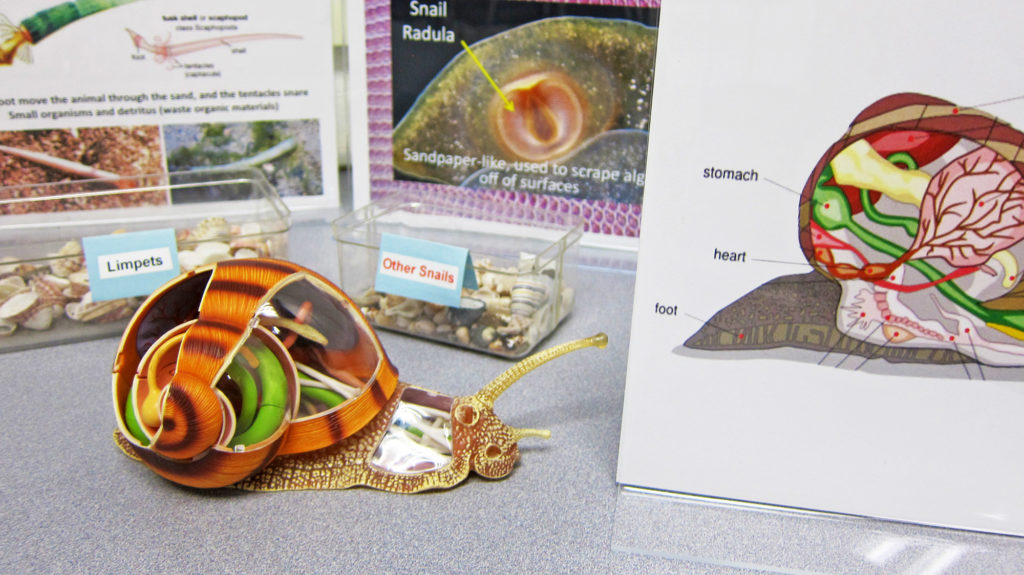
Octopus Brain
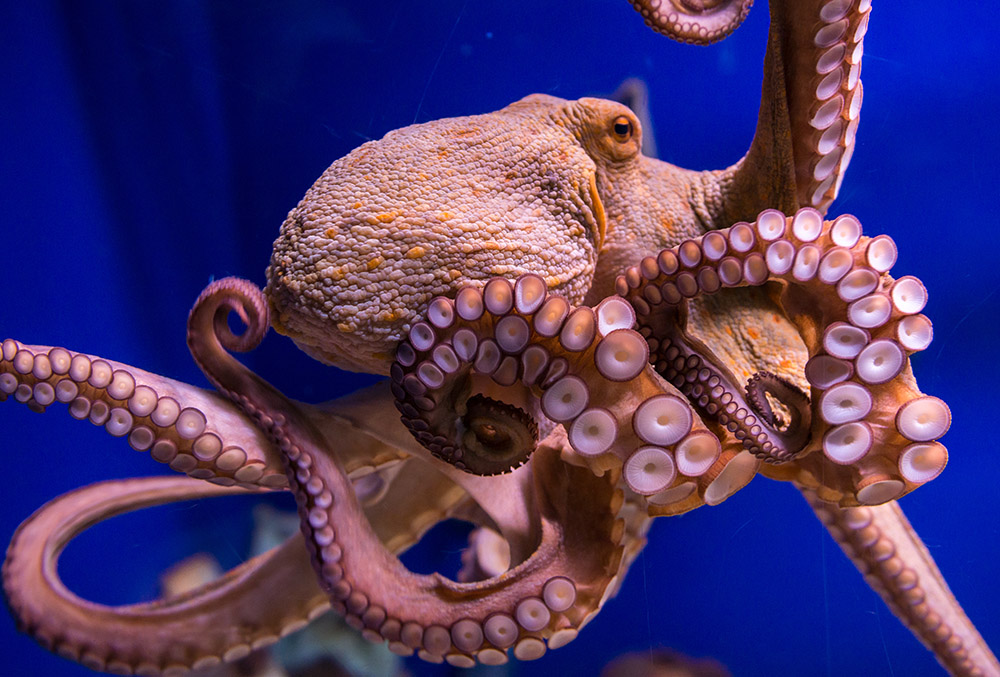
Large Size
Octopuses have the largest brain to body mass ratio of any invertebrate.
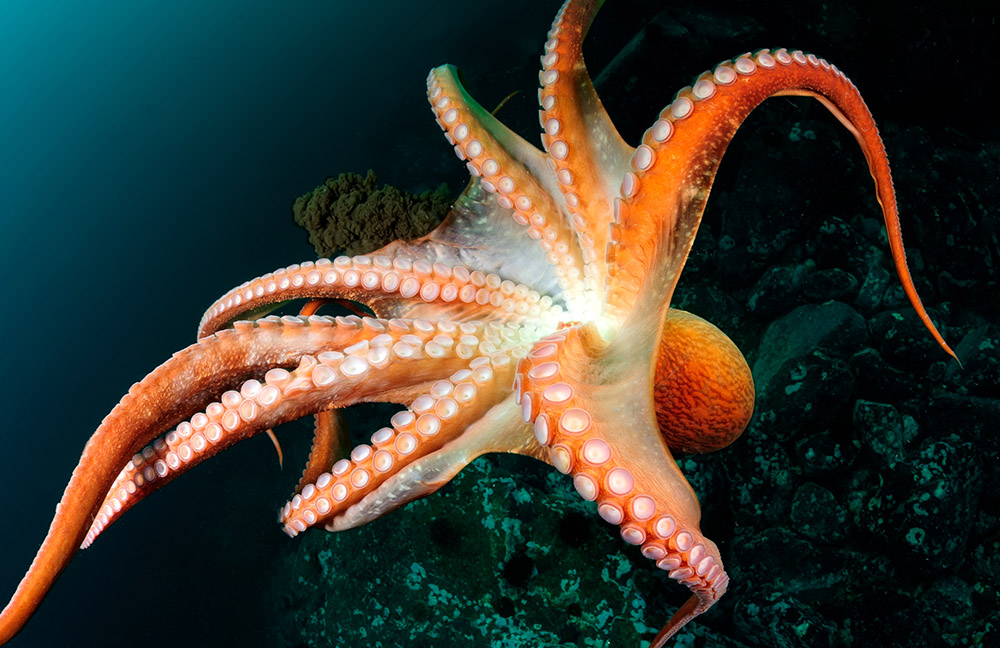
"Smart" Arms
About 2/3 of the octopuses neurons are located in their arms, and these nervous cells can control arm movements without brain involvement.
Octopus Senses
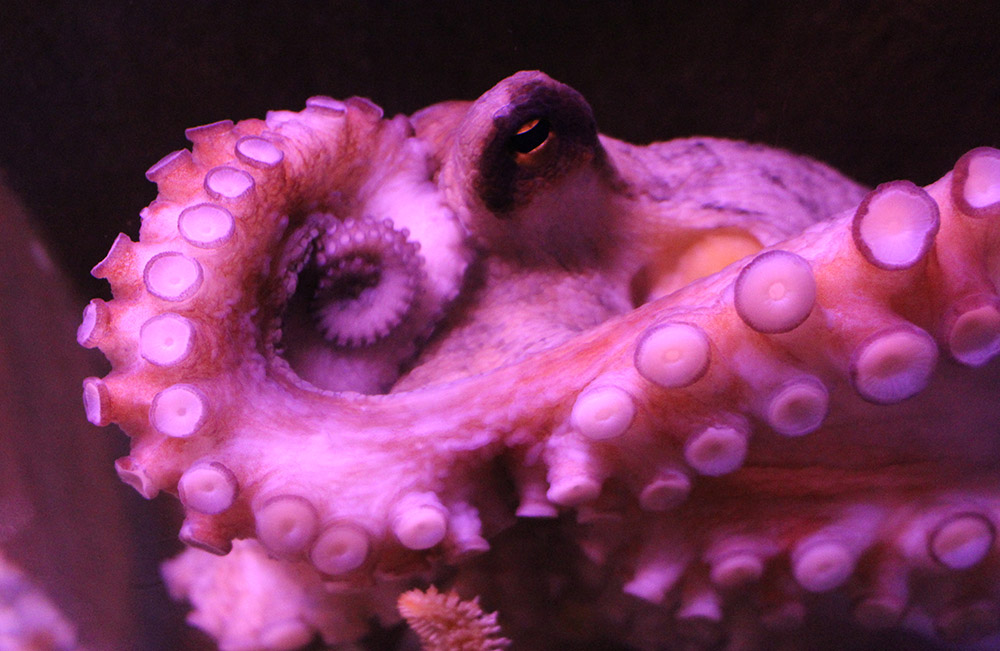
Color Vision
Octopuses have excellent color vision with unique, and not fully understood, properties.
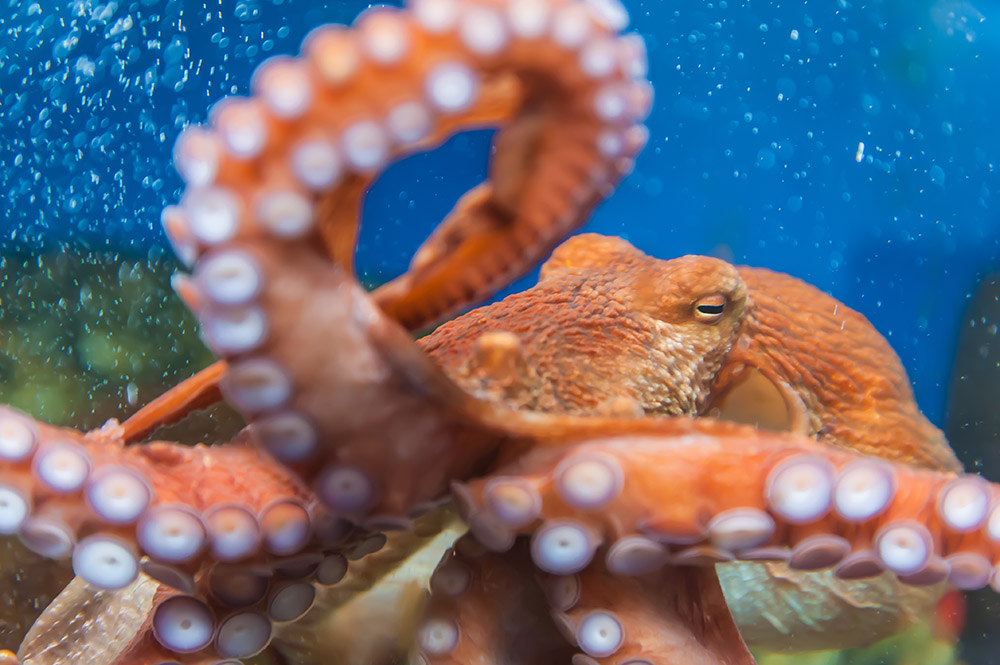
Touch & Taste
The “suction cups” on the arms don’t just touch, they also have chemoreceptors for taste.
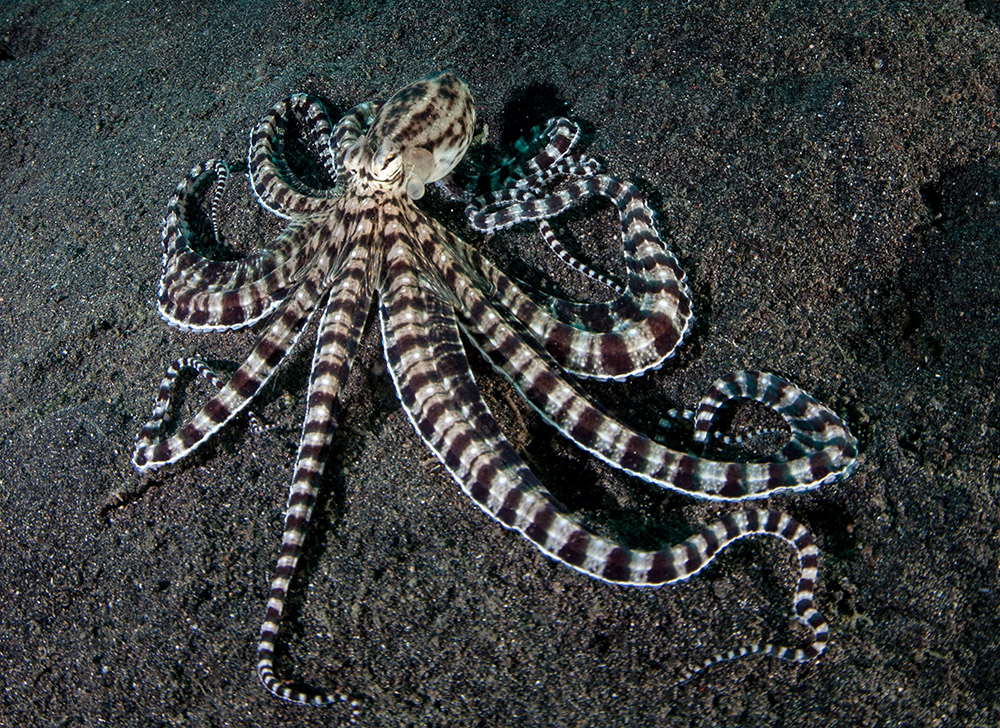
Body Position
Specialized organs called statocysts provide information on body position and enable intricate movements.
Perception and Intelligence
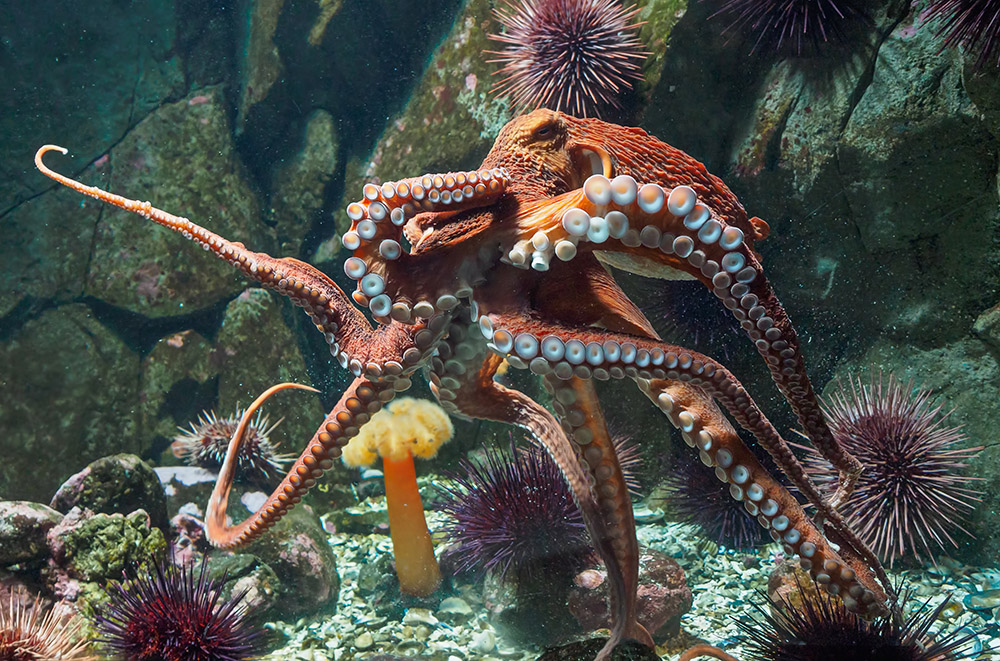
Spatial Intelligence
Octopuses can recognize and distinguish between different shapes and patterns.
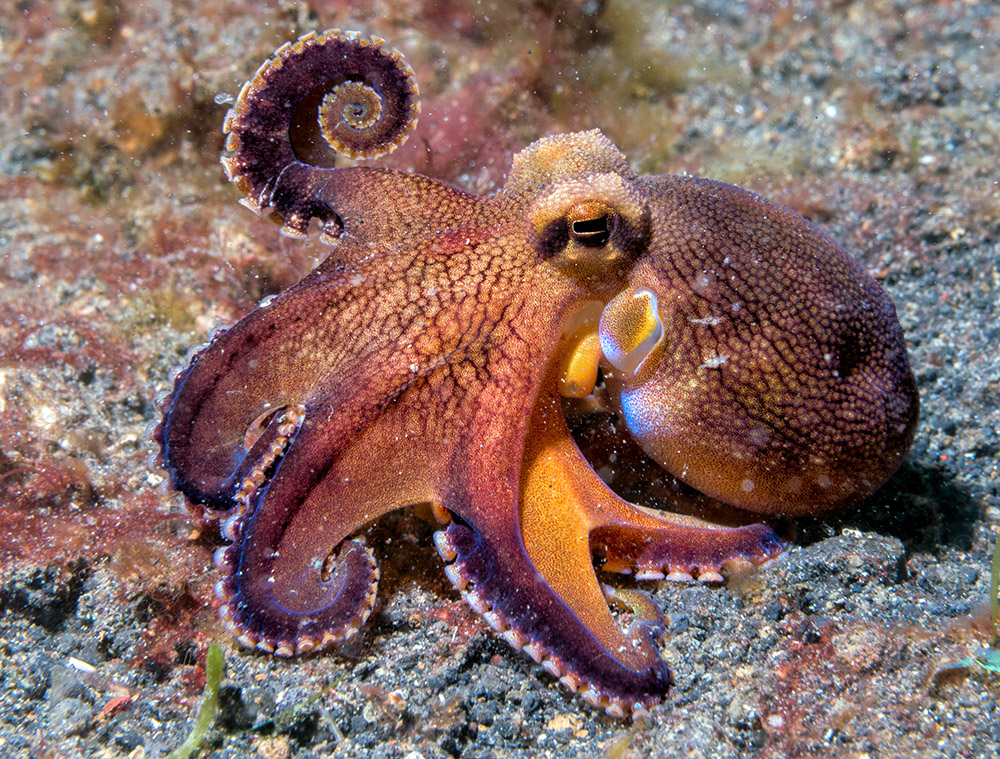
Memory
Octopuses have both short-term and long-term memory, which is critical for learning.

Many mysteries remain about octopus behaviors. For example, parents do not appear to teach their offspring, but they have a capacity for learning often seen in more social species with high degrees of parental care. Also, even species with short life spans seem to have strong memory formation. Octopuses have many unique structures and behaviors that make them an interesting evolutionary puzzle to study.
The next section explores how magnification and measurement impact observations.

Check your knowledge. Can you:
-
compare and contrast human brain structure and abilities to other animal species?
-
explain how cognition relates to animals understanding the world, including examples of different forms of cognition in different species?
-
describe octopus characteristics including sensory organs, perception, and cognitive abilities?



